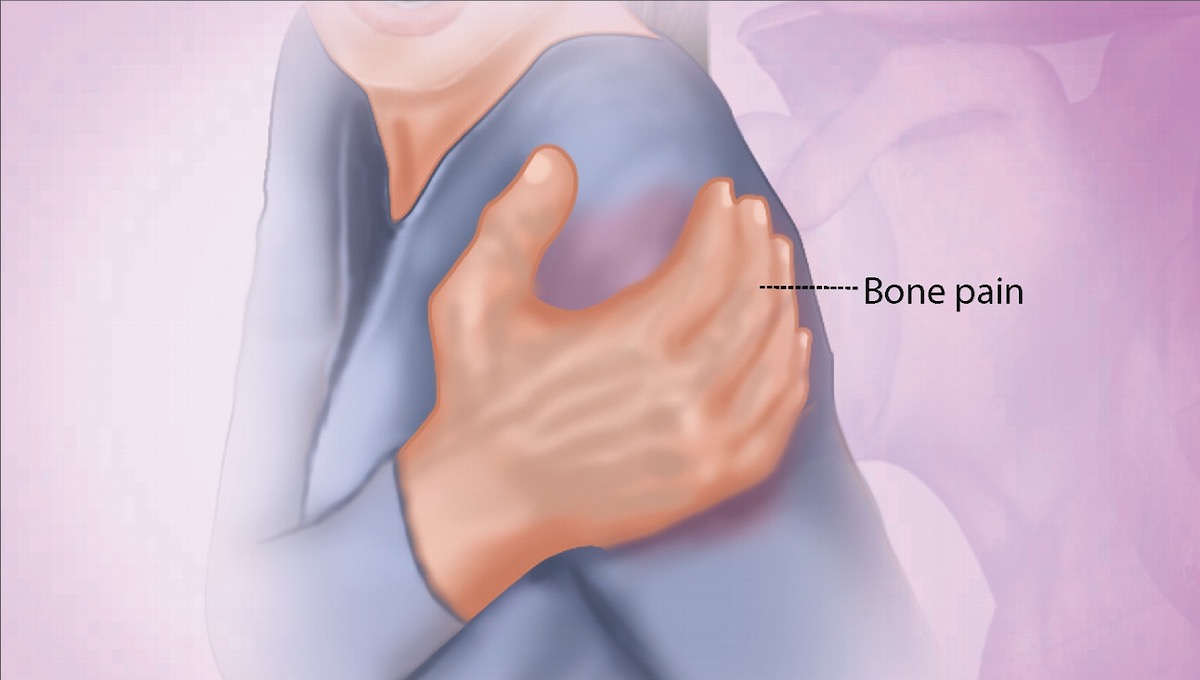There are several factors that increase the risk of getting myelofibrosis. These factors include: your age, genetics, family history of the disease, potential exposure to certain chemicals, and if you already had a blood disorder. Your gender doesn’t play a role in when you’re more at risk. Undiagnosed myelofibrosis can cause several complications over time. These can include problems like low energy due to anemia, a higher risk of infections, difficulties with bleeding, discomfort from an enlarged spleen, bone and joint pain, and, in rare cases, a more severe transformation into a type of blood cancer called acute leukemia. This is why it’s important to know how you can recognize it.

Symptoms of Myelofibrosis
There are several symptoms to recognize myelofibrosis, the two most common ones are fatigue and feeling full/experience pain in the belly. Many people with myelofibrosis feel very tired all the time. This is because the condition can lead to anemia, which means there are not enough red blood cells to carry oxygen around your body. When you don’t have enough oxygen, you get tired easily. Myelofibrosis can cause your spleen to get bigger. When your spleen is enlarged, it can make you feel full even if you haven’t eaten much, and it might cause discomfort or pain in your belly. Other common symptoms include:
- Unexplained weight loss
- Frequent infections
- Easy bruising or bleeding
- Bone and joint pain
- Itchy skin
- Night sweats
- Fever
- Pale skin
- Shortness of breath
Remember, symptoms can vary from person to person, and not everyone with myelofibrosis will experience all of them.
Diagnosis & Treatment Options
To diagnose myelofibrosis, your doctor will begin by discussing your medical history and any symptoms you’ve experienced. They will then perform a physical examination, paying particular attention to the size of your spleen and other physical signs. Blood tests are essential to check for abnormalities such as anemia, low platelet counts, or elevated white blood cell levels.
A bone marrow biopsy, which involves taking a small sample of your bone marrow for microscopic examination, is usually necessary for a definitive diagnosis. In some cases, imaging scans like ultrasounds or CT scans may be used to assess organ sizes. Once all these steps are completed, your doctor can make a diagnosis and discuss the most appropriate treatment options with you. Treatment options include:
- Certain medications, like blood thinners, JAK Inhibitors, and others to manage symptoms
- Blood transfusions
- Stem cell transplant
- Radiation therapy
- Surgery
- Clinical trials
Unfortunately, there is no cure, but the symptoms of this (chronic) condition can be managed with one – or more – of the abovementioned treatment options. Do you need more information about this condition possible treatment options, or do your symptoms not match those listed above? Then search further here quickly:

